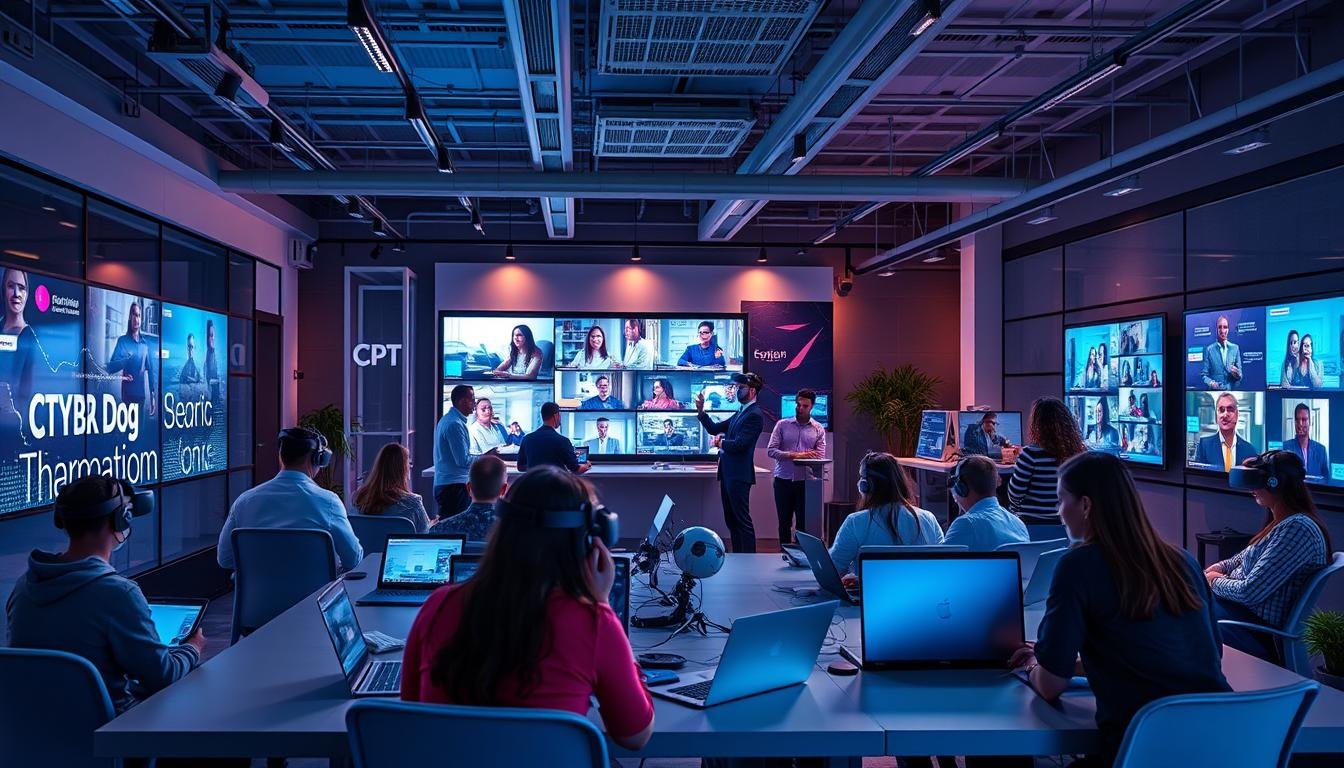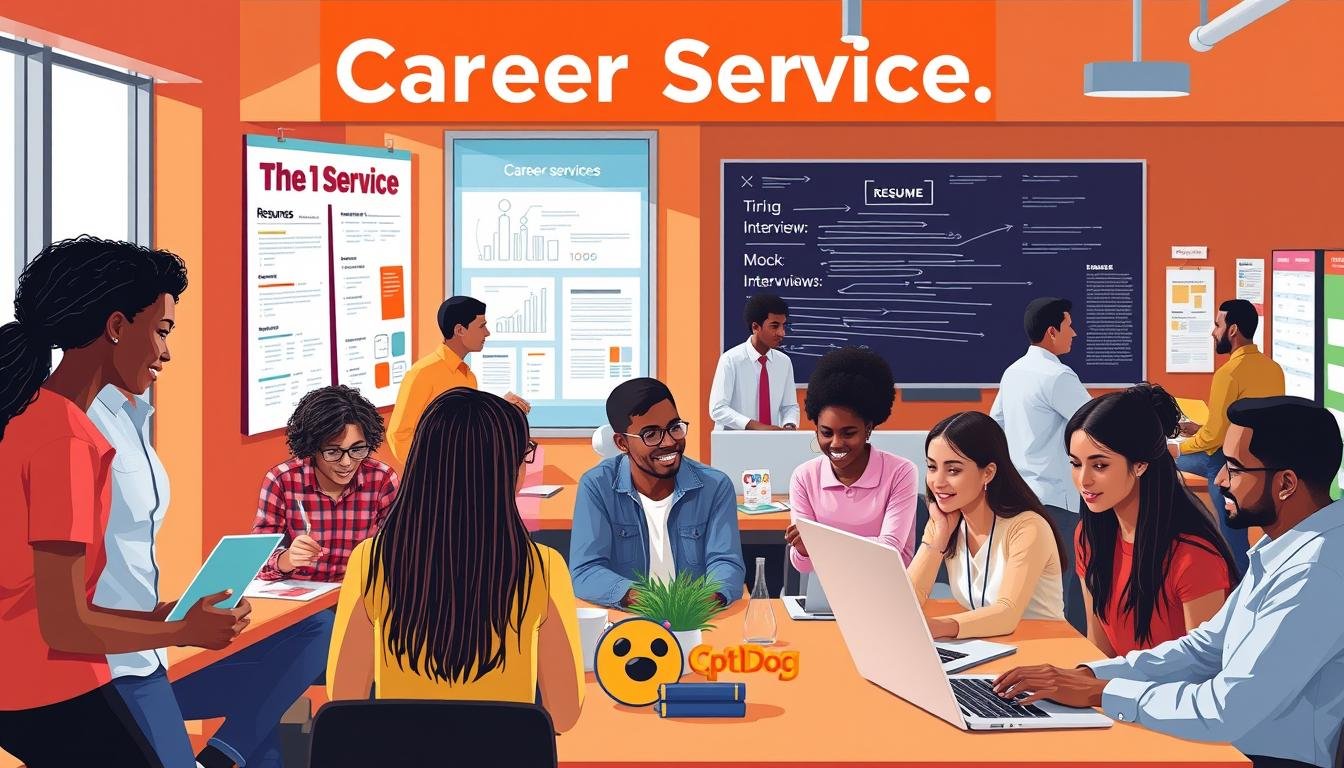In today’s fast-changing work world, hybrid work setups are becoming more common. This is thanks to new tech and the needs of today’s workers. But how important are these tech tools in making a Goelite Professional Hybrid Program work? Do they really help make learning smooth and fun for everyone?
More companies and schools are going for the Professional Hybrid Program model. This means using key tech tools is crucial. Tools like Zoom and Microsoft Teams for video calls, Asana and Trello for projects, and Google Drive and Dropbox for storing files. These tools help hybrid workers and learners work together well and stay productive.
To make a Professional Hybrid Program successful, companies need to set up clear ways to talk and train people to use these tools well. By using technology, you can offer a flexible education that mixes the good parts of being in person and working from home. This meets the needs of today’s busy professionals.
Key Takeaways
- The rise of hybrid work arrangements has been accelerated by technological advancements and changing workforce demands.
- Essential tech tools for hybrid work include video conferencing, project management, cloud storage, and collaborative document editing tools.
- The integration of these technologies empowers hybrid workers and learners to collaborate effectively and maintain high productivity levels.
- Organizations must establish clear communication protocols and invest in training to ensure employees are proficient in using these tools.
- Leveraging technology can create a flexible and engaging Professional Hybrid Program that combines the benefits of in-person and remote methodologies.
Understanding Professional Hybrid Programs
Upskilling and career advancement are key for today’s learners. Professional hybrid programs mix online and in-person learning. They help you gain skills for your career goals.
Definition and Key Features
These programs offer online learning’s flexibility and face-to-face interaction’s benefits. Key features include:
- Flexible scheduling that fits your work and personal life
- Blended learning environments with both online and in-person sessions
- Curricula that match the changing needs of your field
Benefits for Learners
Joining a professional hybrid program brings many benefits for your career advancement and personal growth:
- Improved work-life balance with flexible learning times
- Access to a wide range of learning tools, from online modules to lab sessions
- Chances to use your new skills in real work situations, making you more relevant in your field
These programs use advanced tech to improve teamwork, creativity, and industry-aligned curriculum development. This boosts employee happiness and attracts talent.
“Hybrid programs offer the best of both worlds, combining the flexibility of online learning with the valuable in-person interactions that are crucial for many fields.”
Importance of Technology in Hybrid Learning Environments
Technology is key in making learning better and easier in hybrid settings. Cloud-based tools help share documents and manage projects easily. This makes Hands-On Training and Personalized Learning Paths available to everyone, no matter where they are.
Enhancing Accessibility
Hybrid teaching makes education more accessible. It offers online parts, reaching students who can’t attend classes in person. Tools like video conferencing keep everyone connected, creating a sense of community.
Facilitating Collaboration
The digital world gives us tools to work better together. More than 35% of students want a mix of in-person and online learning. This shows a big interest in hybrid learning.
Teachers and schools are moving towards more flexible learning. This change makes education more dynamic and engaging.
“Hybrid learning spaces should be designed to accommodate a range of teaching and learning styles, different modalities (e.g., in-person, remote, asynchronous), and be accessible to all students, regardless of location or ability.”
Using technology well and training teachers are key to success in hybrid learning. Strong platforms and support for educators are essential for effective hybrid teaching.

Platforms to Consider for Hybrid Programs
The need for Professional Certifications and Future-Ready Skills is on the rise. Technology plays a key role in making hybrid learning programs work well. Two important tools to look at are Learning Management Systems (LMS) and video conferencing tools.
Learning Management Systems (LMS)
Systems like Canvas, Blackboard, and Moodle help organize courses and track student progress. They also make online tests easier. These platforms have cool features like gamification and video conferencing integration.
The eLearning world has grown a lot since 2000, with a 900% increase. By 2025, EdTech spending is expected to hit $342 billion. LMS options like TalentLMS and Adobe Learning Manager are popular for their personalized learning and AI help.
Video Conferencing Tools
Tools like Zoom and Microsoft Teams make it easy to have live classes and group talks. They have features for sharing screens and working together virtually. This makes learning more fun and interactive.
In 2022, 71% of big companies had hybrid events. These events use video tools to reach more people, save money, and help the environment. This is great for Professional Certifications and Future-Ready Skills programs.
Using LMS and video tools well can make hybrid learning great. It helps learners get the Professional Certifications and Future-Ready Skills they need to succeed.
Integrating Interactive Tools within Hybrid Programs
In the world of Personalized Learning Paths and Flexible Education, using interactive tools in hybrid programs is key. These tools boost engagement and make learning smooth for students in different settings.
Gamification Techniques
Gamification, like points, leaderboards, and badges, can really get learners excited. Adding these to your hybrid program makes learning fun and competitive. It encourages students to dive into the material.
Real-Time Polling and Feedback
Tools like Mentimeter, Slido, or Poll Everywhere let teachers check if students get it. They work in both classroom and online settings. This way, you can adjust your teaching to better meet student needs.
“Interactive tools have transformed the way we approach hybrid learning, fostering deeper engagement and creating a more personalized experience for students.”
By adding these tools to your hybrid program, you make learning fun and engaging. It meets students’ varied needs and helps them grow. They learn to think critically, work together, and solve problems.
As you improve your hybrid program, interactive tools can be a big help. They make your Personalized Learning Path and Flexible Education experience better for your students.
Assessing Student Engagement and Performance
Professional hybrid programs are becoming more popular. It’s important to track student progress and engagement. Analytics tools help instructors understand how students are doing and adjust the learning experience.
Analytics Tools for Insight
Tools like Tableau or PowerBI track important metrics. They look at how often students log in, how long they spend on tasks, and their participation in discussions. This data helps instructors see trends and improve teaching methods.
Evaluating Online Participation
Checking how students participate online is key. Instructors look at discussion board posts, peer reviews, and group projects. Tools like automated grading and plagiarism detection help keep things fair and accurate.
| Analytics Tool | Key Features | Benefits |
|---|---|---|
| Tableau |
|
|
| PowerBI |
|
|
Analytics and online participation tracking help instructors in hybrid programs. They get insights, spot areas for growth, and boost Career Advancement for their students.
Building a Supportive Hybrid Learning Community
In the era of Blended Learning, technology is key in building a strong hybrid learning community. It helps instructors create a place where everyone can learn together, both in person and online.
Fostering Instructor-Student Interaction
Virtual office hours, discussion forums, and messaging systems make it easy for instructor-student interaction. These tools let students reach out to teachers, ask questions, and get feedback, all from a distance.
Peer Networking Opportunities
Peer networking is encouraged through online groups, virtual chats, and projects. Tools like Slack or Microsoft Teams help students work together. Social learning platforms and apps build a united learning space, supporting each other.
Technology helps hybrid programs connect students, making them feel part of a community. This ensures learners stay connected and supported in their Industry-Aligned Curriculum journey.
“The pandemic has created rapidly changing circumstances, leading to concerns such as illness, loss of income, homelessness, food insecurity, and neglect/abuse for students and families. The lack of access to technology disproportionately affects under-resourced students, Indigenous, Black, Brown, and other students of color.”

To tackle these issues, we need open communication, tech training, and focus on students’ well-being. A supportive hybrid learning community empowers students to succeed in today’s changing education world.
Addressing Challenges in Hybrid Learning
Hybrid learning combines online and in-person learning. It’s popular because it’s convenient and offers real classroom benefits. But, it faces challenges like tech issues and keeping students motivated.
Overcoming Technological Limitations
Technology is a big challenge in hybrid learning. Schools need reliable internet, modern computers, and easy-to-use digital tools. Good IT support and training help solve tech problems and make learning smooth.
Strategies for Maintaining Motivation
Keeping students interested can be tough. Schools should set clear goals, give regular feedback, and use tech that adapts to each student. Mixing online and in-person activities helps reach all learners, no matter their schedule.
By tackling these issues, schools can make hybrid learning better. This helps students succeed in Upskilling and Hands-On Training.
“Hybrid learning was beneficial for team building and project-based learning, with 83% of students reporting a satisfactory experience and learning practical skills.”
– Ghannam and Chan (2021)
| Challenge | Strategies for Overcoming |
|---|---|
| Technological Limitations |
|
| Maintaining Motivation |
|
Future Trends in Professional Hybrid Programs
The world of work is changing fast, and so are professional hybrid programs. Artificial Intelligence (AI) is set to change everything. It will make learning more personal and flexible for everyone.
Virtual reality (VR) and augmented reality (AR) will also make a big impact. They will improve training, even when you’re not in the same place. This means better hands-on learning from anywhere.
Learning methods are also changing. We’ll see more short, focused lessons and projects that fit into busy schedules. These changes will help professionals learn what they need quickly and effectively.
Curriculum will focus on skills like critical thinking and problem-solving. These are key for the future job market. This way, graduates will be ready for whatever comes next.
As the need for Future-Ready Skills and Professional Certifications grows, programs must keep up. They need to stay relevant and use new tech. This will help learners succeed in a world that’s always changing.



